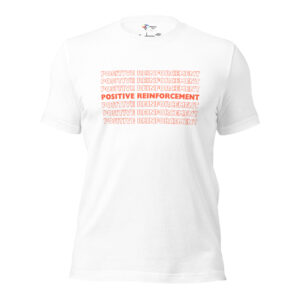ABC Data Collection
Table of Contents
Welcome back to our RBT Competency Assessment blog post series! This post will be covering task number five on the RBT competency assessment: ABC data collection. In this series, we are exploring each task on the RBT Competency Assessment to help new Behavior Technicians (BTs) prepare for their initial competency assessments and provide a valuable refresher for Registered Behavior Technicians (RBTs) renewing their certification.
In the field of Applied Behavior Analysis (ABA), understanding the context in which behaviors occur is crucial for developing effective intervention plans. One of the primary methods for gathering this contextual information is through ABC data collection. ABC stands for Antecedent, Behavior, and Consequence. This method involves recording what happens before, during, and after a behavior, providing a comprehensive picture of the behavior and its triggers.
In this blog post, we will discuss what ABC data collection is, why it is important, and how it is used in ABA. We will also break down the components of ABC data collection—antecedent, behavior, and consequence—and provide cohesive examples to illustrate each component. By mastering ABC data collection, RBTs can significantly enhance their ability to understand and address challenging behaviors, leading to more effective and personalized interventions for their clients.
What is ABC Data Collection?
Definition and Explanation:
ABC data collection is a systematic method used in Applied Behavior Analysis (ABA) to record information about what happens before (Antecedent), during (Behavior), and after (Consequence) a specific behavior. This method provides a comprehensive view of the behavior and its context, helping behavior analysts understand the triggers and consequences that influence the behavior. By documenting the antecedent, behavior, and consequence, RBTs can identify patterns and correlations that may not be apparent through observation alone.
Role in ABA:
In ABA, ABC data collection is crucial for developing effective intervention plans. By understanding the antecedents and consequences associated with a behavior, behavior analysts can design strategies to modify the environment, alter the antecedents, and change the consequences to reduce undesirable behaviors and promote positive ones. This approach ensures that interventions are based on concrete data rather than assumptions, leading to more targeted and effective behavior change strategies.

Why is ABC Data Collection Important?
Benefits of Conducting ABC Data Collection:
- Identifying Patterns: ABC data collection helps RBTs and behavior analysts identify patterns in behavior, such as specific triggers or consistent consequences that reinforce the behavior. This insight is essential for understanding the root causes of behaviors and developing effective interventions.
- Data-Driven Decisions: By providing objective data on antecedents, behaviors, and consequences, ABC data collection supports data-driven decision-making. This ensures that interventions are based on evidence rather than subjective observations, increasing the likelihood of successful outcomes.
- Customized Interventions: Understanding the context of a behavior allows for the creation of customized intervention plans tailored to the individual’s specific needs and environmental factors. This personalized approach enhances the effectiveness of ABA therapy.
- Tracking Progress: Regularly collecting ABC data allows behavior analysts to track the progress of interventions over time. This ongoing monitoring helps in evaluating the effectiveness of strategies and making necessary adjustments to improve outcomes.
Impact on Developing Effective Intervention Plans: ABC data collection provides a detailed and accurate picture of the factors influencing a behavior, which is critical for developing effective intervention plans. By analyzing the data, behavior analysts can identify which antecedents are likely to trigger a behavior and which consequences are reinforcing it. This information is used to design interventions that modify the environment, alter antecedents, and change consequences to reduce challenging behaviors and promote desirable ones. Ultimately, this leads to more effective and sustainable behavior change.
By incorporating ABC data collection into their practice, RBTs can ensure that their interventions are based on a thorough understanding of the behavior and its context, leading to better outcomes for their clients.
Components of ABC Data Collection
Antecedent
Definition and Explanation:
The antecedent refers to the event or environment that occurs immediately before the behavior. It sets the stage for the behavior to occur. Understanding the antecedent helps behavior analysts identify triggers or cues that lead to the behavior, which is essential for developing strategies to modify these triggers and prevent the behavior.
Example in ABA:
A student is given a difficult math problem during class. The math problem is the antecedent that may trigger a specific behavior from the student.
Behavior
Definition and Explanation:
The behavior is the observable and measurable action performed by the individual. It is the central focus of ABA interventions. Recording the behavior accurately is crucial for analyzing its frequency, duration, and intensity.
Real-World Example:
In response to the difficult math problem, the student starts to cry and refuse to work. Crying and refusal to work are the behaviors that need to be addressed.
Consequence
Definition and Explanation:
The consequence is what happens immediately after the behavior. It can either reinforce or discourage the behavior. Understanding the consequences helps behavior analysts determine what is maintaining the behavior and how to modify the consequences to change the behavior.
Real-World Example:
The teacher provides assistance to the student and reassures them. As a result, the student calms down and begins to work on the problem again. The teacher’s assistance and reassurance are the consequences that follow the student’s behavior.
Developing a Solution to Reduce the Behavior
Solution Example:
To reduce the behavior of crying and refusing to work when presented with difficult math problems, the following intervention plan could be developed:
Modify the Antecedent:
- Break down the math problems into smaller, more manageable steps to reduce the student’s anxiety and frustration.
- Provide clear instructions and examples before the student begins the task.
- Use visual aids or manipulatives to support the student’s understanding of the problem.
Teach Alternative Behaviors:
- Teach the student to ask for help or express their frustration using appropriate language instead of crying.
- Role-play different scenarios where the student might encounter a difficult problem and practice the appropriate response.
Adjust the Consequence:
- Reinforce the student for using appropriate behaviors to seek help or express frustration. For example, provide praise or a small reward when the student asks for help calmly.
- Provide consistent support and encouragement to build the student’s confidence in their ability to solve difficult problems.
Example Intervention Plan:
The next time the student is given a difficult math problem, the teacher breaks it down into smaller steps and provides a visual aid. The student is taught to raise their hand and say, “I need help,” when they feel frustrated. When the student uses this behavior, the teacher immediately provides assistance and praises the student for asking for help appropriately. Over time, the student learns to manage their frustration and engage with the math problems more effectively, reducing the occurrence of crying and refusal to work.
By identifying and analyzing the antecedents, behaviors, and consequences, RBTs can develop targeted interventions to modify the environment, alter antecedents, and change consequences, ultimately promoting positive behaviors and reducing challenging ones.
FAQ on ABC Data Collection in ABA
- Q: What is ABC data collection?
- A: ABC data collection is a method used in Applied Behavior Analysis (ABA) to record the Antecedent (what happens before the behavior), the Behavior itself, and the Consequence (what happens after the behavior). This method helps behavior analysts understand the context of behaviors, identify patterns, and develop effective intervention strategies. By documenting the antecedent, behavior, and consequence, RBTs can gather detailed information that aids in understanding why a behavior occurs and how to modify it.
- Q: How to collect ABC data example?
- Antecedent: Record what happens immediately before the behavior. For example, “The student is asked to share toys during playtime.”
- Behavior: Document the specific behavior that occurs. For example, “The student pushes another child and grabs the toy.”
- Consequence: Note what happens immediately after the behavior. For example, “The teacher intervenes, and the student is given a time-out.”A: To collect ABC data, follow these steps:
- Example:
- Antecedent: The student is asked to share toys during playtime.
- Behavior: The student pushes another child and grabs the toy.
- Consequence: The teacher intervenes, and the student is given a time-out.
- Q: When should you collect ABC data?
- A: ABC data should be collected whenever you need to understand the context and triggers of a specific behavior, especially when addressing challenging or problematic behaviors. It is particularly useful during initial assessments, when developing behavior intervention plans, or when there are significant changes in a client’s behavior. Collecting ABC data consistently over time can provide valuable insights into behavior patterns and the effectiveness of interventions.
- Q: What is an example of ABC behavior analysis?
- A: An example of ABC behavior analysis involves identifying and analyzing the antecedents, behaviors, and consequences to develop targeted interventions. For instance:
- Antecedent: A child is told that playtime is over and they need to transition to a new activity.
- Behavior: The child throws a tantrum, including screaming and hitting.
- Consequence: The teacher allows the child to continue playing for a few more minutes to calm down. Based on this analysis, an intervention plan might include modifying the antecedent by providing a warning before the transition, teaching the child to use a calm-down strategy, and adjusting the consequence by consistently following through with the transition and using positive reinforcement for appropriate behavior.
Final Thoughts
ABC data collection is a fundamental practice in Applied Behavior Analysis (ABA) that helps behavior analysts and RBTs understand the context of behaviors. By systematically recording the Antecedents, Behaviors, and Consequences, practitioners can identify patterns and develop effective, data-driven intervention strategies. This method not only aids in understanding why a behavior occurs but also guides the creation of personalized interventions that address the root causes of behaviors.
Mastering ABC data collection allows RBTs to make informed decisions, track progress, and adjust intervention plans as needed. This approach ensures that clients receive the most effective and tailored support, ultimately leading to better outcomes. By incorporating ABC data collection into their daily practice, RBTs can enhance their ability to manage challenging behaviors and promote positive change.
Explore More Resources
If you found this guide on ABC data collection helpful, be sure to explore more resources on our website. We offer a wealth of information, including detailed articles, study guides, and practical tips to help you succeed as a Registered Behavior Technician (RBT).
Are you preparing for the RBT competency assessment? Check out our comprehensive study materials and mock exams designed to help you ace the test and become a confident, competent RBT.
Don’t forget to visit our ABA Schwag Shop for unique and fun merchandise! Show your pride in the field with our selection of ABA or RBT-themed shirts, mugs, and more.
For more information on becoming a Registered Behavior Technician and for the latest research and resources in Applied Behavior Analysis, visit the Behavior Analyst Certification Board (BACB) website.
Share this blog with your peers and colleagues to spread the knowledge and support the ABA community!



